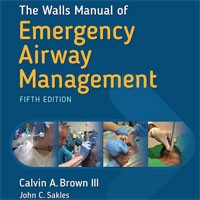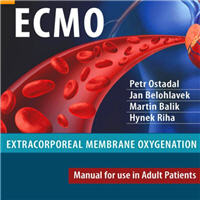Tag: intubation
Perhaps something isn’t always better than nothing
It is not unreasonable to say the COVID-19 pandemic caught most of us by surprise. We did not know how infectious the Severe Acute Respiratory Syndrome-Coronavirus-2 (SARS-CoV-2) virus leading to COVID-19 disease was, nor... read more
Exhaled Air Dispersion During Bag-mask Ventilation and Sputum Suctioning
Mask ventilation and coughing during oro-tracheal suctioning produce aerosols that enhance nosocomial transmission of respiratory infections. We examined the extent of exhaled air dispersion from a human-patient-simulator... read more
Cardiopulmonary Resuscitation in the Emergency Department During COVID-19
Emergency medical services (EMS) is called for a 65-year-old man with a 1-week history of cough, fever, and mild shortness of breath now reporting chest pain. Vitals on scene were HR 110, BP 135/90, SpO2 88% on room air.... read more
Safe Airway Management for the Patient with COVID-19
In this presentation, Dr Ravi Bhagrath, Consultant Anaesthetist at Bart’s Health, London asks Dr Kariem El-Boghdadly, Consultant in Anaesthesia at Guy's and St Thomas' NHS Foundation Trust, London about the IntubateCOVID... read more
Tube Thoracostomy during the COVID-19 Pandemic
This document provides guidance for trauma and acute care surgeons surrounding the placement, management and removal of chest tubes during the COVID-19 pandemic. Tube thoracostomy for a traumatic hemothorax or pneumothorax... read more
How to Intubate the Critically Ill Like a Boss
Despite decades of experience with endotracheal intubation, we continue to find approaches to improving the process of how we intubate. In today's post we are not only going to talk about how to avoid post intubation cardiac... read more
Is Locoregional Anesthesia a Functional Option for Major Abdominal Surgeries in the COVID-19 Era?
Based on our preliminary case series, awake open surgery has resulted feasible and safe. This approach has allowed to perform undelayable major abdominal surgeries on fragile patients when intensive care beds were not available.... read more
Simulated COVID-19 Contamination of Health Care Workers After Endotracheal Intubation of Manikins
Despite personal protective equipment, fluorescent markers were found on the uncovered skin, hair, and shoes of participants after simulations of emergency department management of patients experiencing respiratory distress.... read more
A Transdisciplinary COVID-19 Early Respiratory Intervention Protocol
In the days after COVID-19 arrived in our region, there were many such stories of patients sent to the floor from the Emergency Department who were intubated shortly after admission. Many of those patients subsequently... read more
Awake Proning for COVID-19
Prone positioning improves oxygenation in spontaneous breathing nonintubated patients with hypoxemic acute respiratory failure: A retrospective study. This is a retrospective case series describing 15 non-intubated patients... read more
High Risk of Thrombosis in Patients with Severe COVID-19
Despite anticoagulation, a high number of patients with ARDS secondary to COVID-19 developed life-threatening thrombotic complications. Higher anticoagulation targets than in usual critically ill patients should therefore... read more
COVID-19: Tube Exchange
Emergency physicians rarely are involved in tube exchanges; I can't remember the last time I had to do one. However, during the COVID19 surge, we found ourselves boarding intubated patients for days and even weeks as our... read more
What’s Working for COVID-19 Patients in the Epicenter
Our large tertiary care ED in Queens, NY, usually sees more than 100,000 adults a year. As we write this, we have 850 COVID-19-likely or -positive patients (several hundred above our bed capacity just one month ago), more... read more
COVID-19 NIV: Helmet vs Mask
Over the past few weeks there has been a shift in the management of critically ill COVID-19 patients. Many seem to have moved away from an intubate early strategy to the use of high flow nasal cannula (HFNC) and noninvasive... read more
Trying Not to Intubate Early & Why ARDSnet may be the Wrong Ventilator Paradigm
Many of us have been working under the paradigm that COVID-19 PNA eventually develops into ARDS in the sickest patients. It appears to me that these patients don’t fit into this paradigm. Many have normal to high compliance... read more
Patient Self-proning with HFNC Improves Oxygenation in COVID-19 Pneumonia
A high-flow nasal cannula (HFNC) is commonly used in the management of hypoxic respiratory failure, and is associated with more ventilator-free days and lower mortality compared with standard oxygen therapy or non-invasive... read more
Constantly Shifting Strategies for COVID-19
We are all learning as we go, but we are seeing more than 200 COVID-19 patients every day in our emergency department in Queens, NY, and this is what we are doing to evaluate and treat patients, keep everyone safe, and boost... read more
Understanding Happy Hypoxemia Physiology During COVID-19
Happy hypoxemia is severe hypoxemia (poorly responsive to supplemental oxygen) without dyspnea. This isn't anything especially new – we have occasionally seen this since time immemorial. However, COVID is causing us to... read more
Oxygen Escalation Therapy and Noninvasive Ventilation During COVID-19
We are in the midst of the COVID-19 pandemic. Many parts of the world have been ravaged by this virus, but disease severity varies significantly. There are several types of patients with COVID-19: those who have mild disease... read more
Pediatric Airway Management in COVID-19 Patients
The severe acute respiratory syndrome coronavirus 2 (COVID-19) pandemic has challenged medical systems and clinicians globally to unforeseen levels. COVID-19's rapid spread has forced clinicians to care for patients with... read more
The Walls Manual of Emergency Airway Management
The Walls Manual of Emergency Airway Management is the world's most trusted reference on emergency airway management, and is the foundation text in the nationally recognized The Difficult Airway Course: Emergency and The... read more

Restoring Humanity In The ICU During COVID-19
Machines, tubes, wires, drugs, isolation, confusion... how can we protect the dignity and sanity of our patients when they're at their most vulnerable? Dr. Wes Ely is a Vanderbilt professor and critical care doc who can... read more









